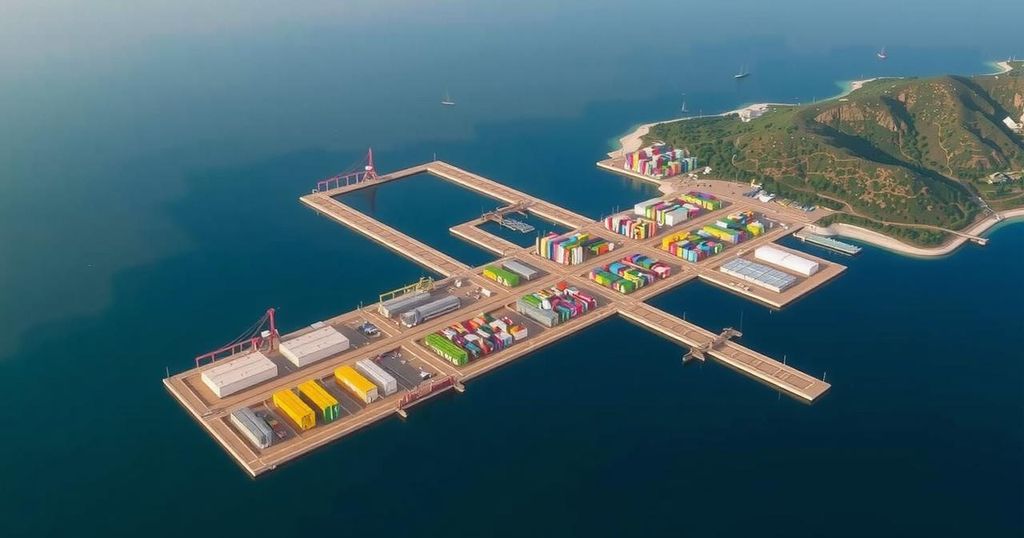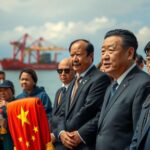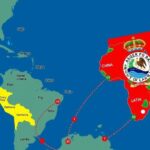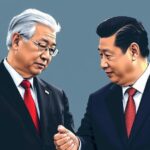Politics
AFRICA, ASIA, ASIA - PACIFIC, BEIJING, CESAR BARRETO MAURICIO MUNOZ, CHANCAY, CHINA, ECONOMIC DEVELOPMENT, GAO, GREAT HALL OF THE PEOPLE, INFRASTRUCTURE PROJECTS, IZQUIERDO, JADE, LEADERSHIP, MALI, MEDIA, MEXICO, NORTH AMERICA, PERU, PERUVIAN, ROSA COLLANTES, SEN, SENOR DE LA SOLEDAD, SILVIA, SOUTH AMERICA, SURFING, UNITED STATES, XI JINPING
Omar El-Sharif
Local Dissent Surrounds China’s Newly Unveiled Mega Port in Peru
Chinese President Xi Jinping to inaugurate a new mega port in Chancay, Peru, aimed at boosting trade with Asia-Pacific. Local residents express dissatisfaction over lost fishing spots and lack of economic benefits, raising concerns about pollution and environmental impacts. While the port promises significant investment, its implications for the local community remain contentious, highlighting calls for equitable development.
Chinese President Xi Jinping is poised to inaugurate a significant mega port in Chancay, Peru, envisioned to enhance trade between South America and the Asia-Pacific region. However, local residents express their dissatisfaction due to a lack of economic opportunities and the detrimental impacts on their livelihoods, particularly in the fishing industry. The $1.3 billion project, largely owned by the Chinese shipping giant Cosco, aims to transform Chancay into a key global trade hub, yet many locals feel excluded from its benefits. Amidst rising concerns, residents report that the port’s construction has curtailed fishing activities, with essential breeding grounds devastated by dredging operations. Fisherman Julius Caesar lamented the loss of traditional fishing spots and criticized local authorities for not safeguarding the community’s interests. Similarly, fisherman Rafael Ávila noted an alarming shift in catch sizes, necessitating more extensive and costly fishing efforts. Local vendors and business owners are also feeling the strain as diminished fish stocks and altered currents disrupt tourism and the fishing economy. Residents are deeply concerned about environmental repercussions, particularly the potential for pollution reminiscent of a prior oil spill incident that wreaked havoc on local marine life. Many locals have taken to voicing their opposition, as illustrated by graffiti that reads “No to the megaport,” reflecting their disillusionment with the project’s ramifications on their community. Port officials acknowledge the disparities between the modern port infrastructure and the impoverished conditions of the surrounding village, with promises to investigate avenues for promoting local economic growth and addressing inequalities. In summary, while the Chancay mega port project holds the promise of significant economic development and infrastructure improvement, the immediate effects on the local community and environment raise essential questions about sustainability and inclusiveness. Addressing the concerns of Chancay’s residents will be critical as Peru navigates its role in larger global trade networks.
The inauguration of the mega port in Chancay is part of a broader strategy by the Peruvian government to develop infrastructure that can facilitate trade with the Asia-Pacific, particularly with China’s expanding influence in South America. The port project is expected to generate substantial investment and create new trade routes for various Peruvian exports, such as blueberries and copper. However, this development has sparked considerable concern among local communities regarding the environmental impact and their lack of participation in the anticipated economic benefits, which raises issues of social justice and equity.
In conclusion, while the Chancay mega port project is intended to bolster Peru’s economic position in the global market, it has provoked significant unrest among local residents. Their experiences of exclusion from economic opportunities, compounded by environmental concerns, underscore the necessity for inclusive planning and community engagement in such large-scale developments. It is imperative that authorities address these critical issues to ensure that local communities benefit from national projects that alter their livelihoods and environment.
Original Source: apnews.com








Post Comment